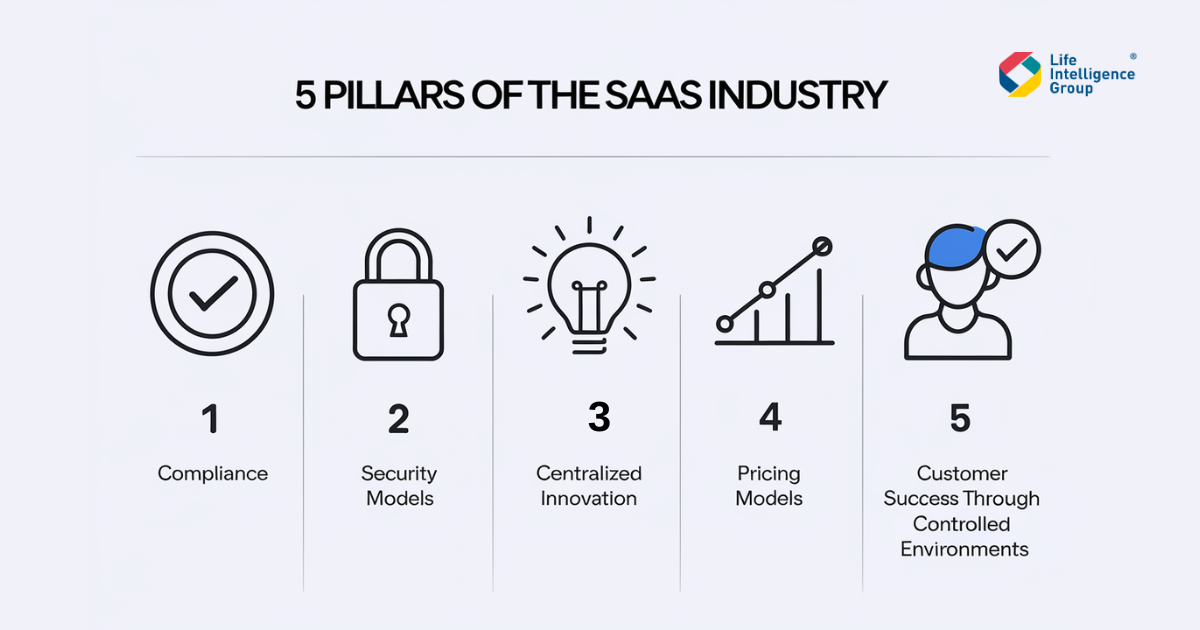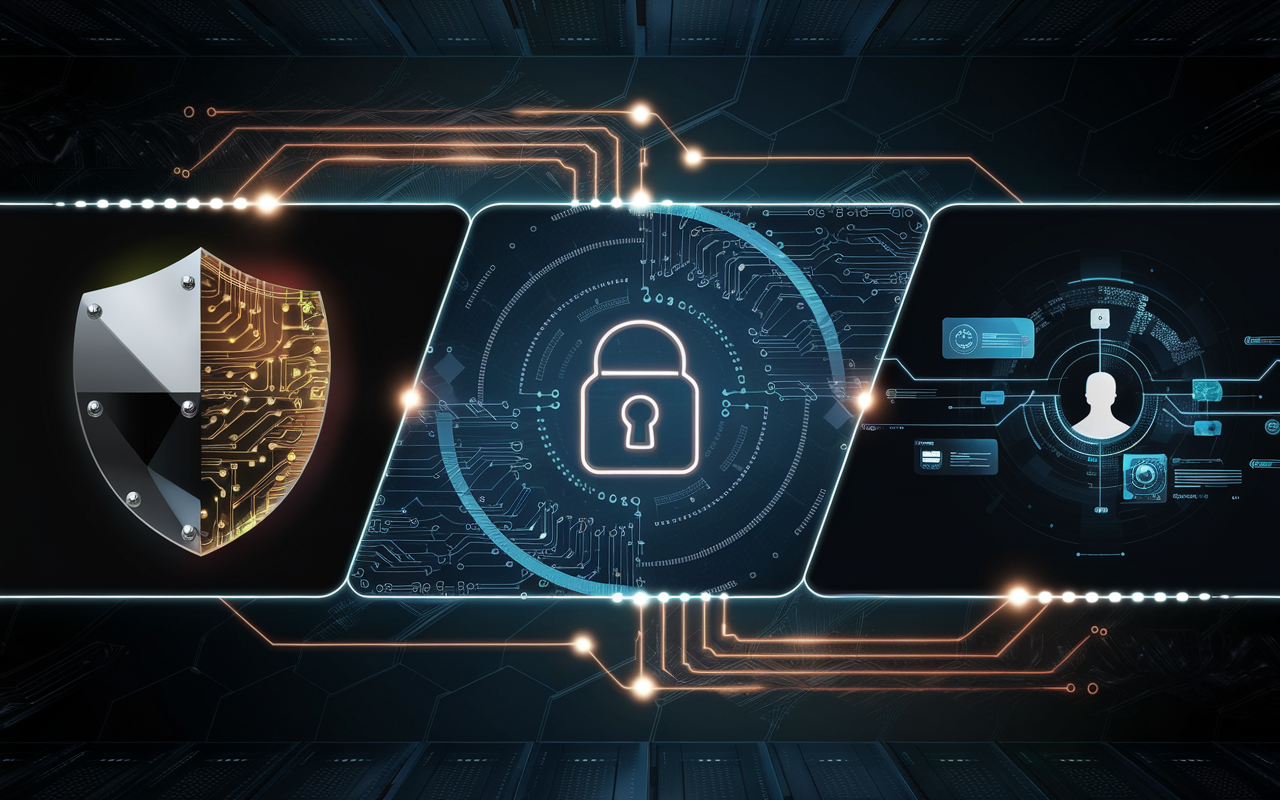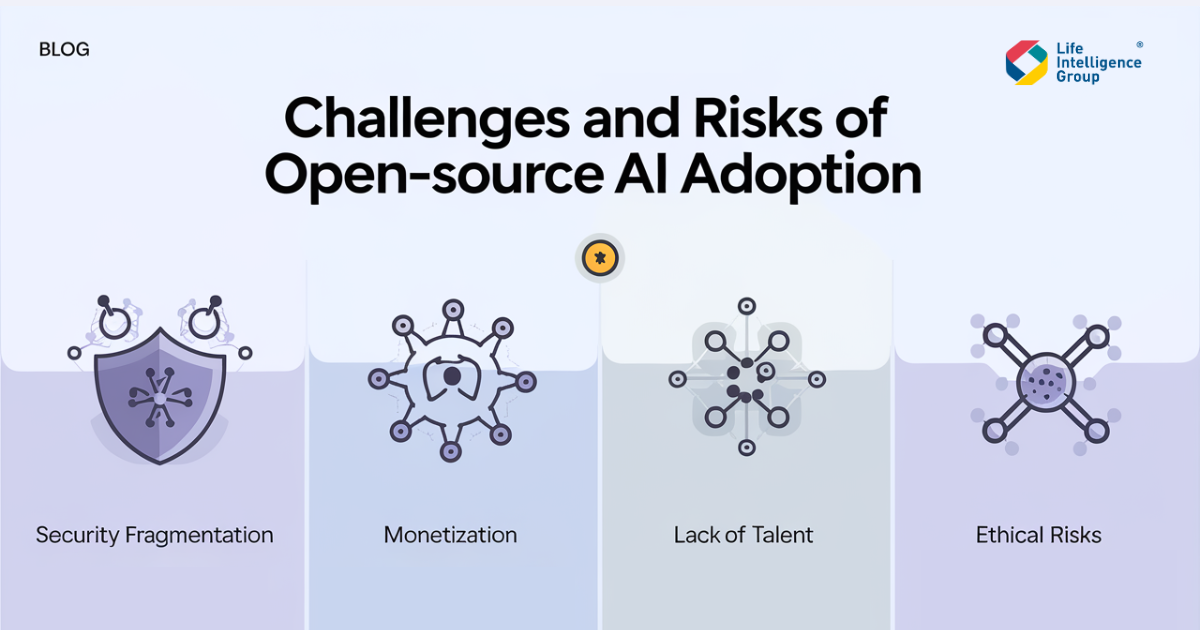Open-Source AI: DeepSeek's Impact on the Future of SaaS Development
Introduction: The Rise of DeepSeek and a New SaaS Playbook
In 1983, Richard Stallman launched a revolution. He believed that software should be free—not just in price, but in spirit. The freedom to use, study, modify, and share code.
At the time, this seemed like an idealistic dream in a world dominated by proprietary software giants.
Forty years later, a similar revolution is unfolding in artificial intelligence. DeepSeek, a Chinese startup, blew competition out the water by releasing a model that is not just faster and better, but is also open source.
Just as Linux transformed operating systems from expensive proprietary products into accessible tools, the rise of DeepSeek is offering a glimpse into how AI can become not just a luxury that only well-funded SaaS companies can afford into a resource that any developer or startup can harness.
Established SaaS Norms & How They are Challenged
Every industry has its sacred cows—deeply held beliefs that shape how business is done.
For decades, the SaaS industry has built its empire on five fundamental pillars.
Like ancient load-bearing columns, these pillars have supported everything from small startups to tech giants. But now, they're beginning to crack.

Pillar 1: Compliance
In 2023, a typical SaaS company would spend months and hundreds of thousands of dollars achieving certifications like ISO 27001 and SOC 2.
These badges of honor were the price of admission to enterprise deals. But by late 2023, something shifted.
The introduction of ISO/IEC 42001—a new standard specifically for AI systems—signaled that the old rulebook was being rewritten.
Open-source AI wasn't just challenging how software is built; it was transforming how it's validated.
Pillar 2: Security Models
Traditional SaaS companies built fortresses around their code, believing that secrecy meant safety. Yet in 2024, 66% of developers are choosing open-source AI models, proving that transparency can coexist with security.
Companies are now using Cloud Access Security Brokers (CASB) to manage this new reality, turning what was once a binary choice between "closed and secure" or "open and vulnerable" into a spectrum of possibilities.
Pillar 3: Centralized Innovation
The third pillar—centralized innovation—is perhaps experiencing the most dramatic transformation.
When a single company's research and development budget determined the pace of innovation, giants like Salesforce and Microsoft set the tempo.
Yet today, with open-source AI, a talented developer with a laptop can challenge these titans. The democratization of AI has turned innovation from a marathon into a sprint.
Pillar 4: Pricing Models
Pricing models are crumbling under their own weight.
While traditional SaaS companies still spend an average of $4,830 per employee annually on tools —a 21.9% year-over-year increase—open-source alternatives are rewriting the economics of software.
The old argument that quality software requires expensive subscriptions is being disproven daily by communities of developers building sophisticated AI tools available to all.
Pillar 5: Customer Success Through Controlled Environments
The final pillar—customer success through controlled environments—is being reimagined.
Traditional SaaS companies built elaborate systems to guide and retain customers. But when 94% of organizations are already using some form of generative AI, with 71% reporting it directly impacts their growth, the question isn't whether to adapt, but how quickly.
These pillars aren't crumbling because they were poorly built but because the ground beneath them has shifted.
The rise of open-source AI is fundamentally changing what software can be.

Case Studies and Trends on the Benefits of Open-Source AI
There have been independent reports of startup developers slashing their AI spending by 90% using open-source models. Now that is not just about saving money— that’s proving a point.
Open-source AI is quickly becoming a fundamental reimagining of what's possible.
This transformation is happening across every sector.
Consider Hanseatic Bank's journey: by implementing open banking APIs based on open-source technology, they slashed their partner onboarding time from six weeks to just two days. That isn't just an efficiency gain but a complete redefinition of what's possible in financial services.
Traditional SaaS companies are discovering that open-source AI isn't just a trend to watch but is a force multiplier.
Salesforce, the very embodiment of traditional SaaS, now uses generative models to allow users to customize their CRM experience. Slack, once a simple messaging platform, has transformed into an AI-powered command center through intelligent integrations.
The numbers tell an even more compelling story.
Companies transitioning to open-source alternatives have achieved up to 95% reduction in their annual SaaS costs.
But the real revolution isn't in cost savings—it's in what companies do with those savings.
One AI chat platform provider cut their cloud costs by 50% and immediately reinvested in staffing and new initiatives. They weren't just saving money; they were buying freedom to innovate.
This shift is accelerating development cycles in unprecedented ways.
Tasks that once took hours now execute in minutes, with development cycles shortened by up to 40%.
But speed isn't the only benefit. AI-powered development tools are fundamentally changing how software is built, allowing developers to focus on creativity rather than routine coding.
And this shift is not exclusive to tech. In fact, the environmental sector offers the most inspiring examples of how open-source AI can become world-changing tools.
In Edinburgh, Space Intelligence uses AI and satellite imagery to map deforestation's impact on climate change. They've mapped over one million hectares of land from space.
In Brazil, AI-powered drones can plant 180 seed capsules per minute, revolutionizing reforestation efforts.
These are just the beginning of the transformation.
Today, 69% of cloud environments are now hosting AI SDKs and tools, and 42% of organizations are actively choosing to self-host AI models.
Low-code and no-code platforms are making these tools accessible to everyone, not just technical experts. Platforms like Appsmith AI and NocoBase are proving that you don't need a computer science degree to harness the power of AI.

Strategic Shifts for SaaS Companies
We can already see some of these strategic shifts happen with some of the biggest companies to date.
Netflix started using MLOps to manage their AI models.
This transformation is happening across the SaaS industry, as companies realize that surviving in the age of open-source AI requires a fundamental reimagining of how they operate.
Shift Towards Hybrid Security Models
The first shift is in how companies approach compliance and security.
Gone are the days when security meant building walls around proprietary code. Today's leaders are adopting hybrid models, combining the transparency of open source with the reliability of enterprise-grade security.
Companies like Salesforce demonstrate this with their Einstein Copilot Studio, which allows customers to build custom AI instances while maintaining enterprise-level security.
Shift Towards Open-Core Strategy
The open-core strategy represents another crucial pivot. Think of it as the "freemium" model for the AI age. Companies provide their core technology as open source while monetizing premium features and support.
This approach isn't just about pricing—it's about building trust through transparency while maintaining a sustainable business model.
Shift Towards Hyper-Personalization
Customer relationships are being reimagined through what we might call "Customer-Centricity 2.0." – the age of hyper-personalization.
Companies like Starbucks are leading the way by using AI to customize everything from order recommendations to store suggestions. The results are compelling: companies implementing AI-driven personalization are seeing up to 11x increases in purchase rates.
The most successful companies are those that view these changes not as separate initiatives but as parts of a cohesive transformation.
Take Slack's journey: they didn't just add AI features but transformed their entire platform into an AI-powered command center.
Or consider how Notion personalizes each user's onboarding experience based on their role and goals, creating a unique journey for every customer.
The trend points to recognizing that in the age of open-source AI, the old playbook—where companies competed primarily on features and pricing—is obsolete. The new competition is about who can best help their customers harness the power of AI to solve real problems.
Challenges and Risks of Open-Source AI Adoption
Despite DeepSeek’s emblematic rise to success as the champion of Open-Source AI, it did not come without controversy.
Cisco researchers discovered that DeepSeek's AI model failed to block any harmful prompts, resulting in a 100% attack success rate. This simultaneously opened up discussions on the complexities and challenges of securing open-source AI.
Challenge 1: Security Fragmentation
While traditional SaaS applications operate like fortresses with clear boundaries, open-source AI systems are more like bustling marketplaces—vibrant but harder to secure.
Companies are discovering that their AI models can be vulnerable to "goal hijacking" and prompt leakage, where safety guardrails are bypassed. More concerning is the data exposure risk: any information fed into these platforms potentially becomes part of the public machine learning algorithm.
Challenge 2: Monetization
Monetization presents an equally complex puzzle. Companies using the open-core model face a delicate balancing act: provide too many features in the free version and you'll struggle to convert users to paying customers. Offer too few and you risk alienating the community that makes open-source valuable.
Engineering teams find themselves in a constant dance between prioritizing features for paid products and maintaining the vitality of their open-source offerings.
Challenge 3: Lack of talent
The talent gap remains a yawning chasm.
A 2022 Deloitte survey estimated that there are only 22,000 AI specialists globally. A good 60% of IT decision-makers also consider the AI area to have the largest shortage of talent. This gap isn't just a hiring challenge—it's an existential threat to companies' AI ambitions.
Challenge 4: Ethical Risks
When AI models are trained by a global community, who's responsible for their biases?
When code can be forked and modified freely, how do you ensure it's not being used for harm?
Traditional audit trails and compliance frameworks weren't built for this new reality where models can be rapidly modified and redeployed.
Yet companies aren't facing these challenges alone. The same community that makes open-source AI powerful is also working to solve these problems. Organizations like Hugging Face are developing better security tools. Companies like Salesforce are creating new training programs to address the skills gap. Global initiatives are emerging to establish ethical guidelines for AI development and deployment.
Future Outlook: The SaaS Industry in 2025 and Beyond
The future of SaaS isn't a destination—it's an evolution. As we look toward 2025 and beyond, three clear patterns are emerging that will reshape the industry.
First, vertical SaaS is poised to dominate.
The days of one-size-fits-all software are ending. Just as Space Intelligence uses AI to revolutionize forestry management and Eugenie.ai focuses exclusively on emissions tracking for heavy industry, successful SaaS companies will dive deep into specific sectors.
The winners won't just add AI features to their products but build AI-native solutions for distinct industry challenges.
Second, the architecture of SaaS itself is being reimagined.
The monolithic suites that dominated the 2010s are giving way to composable architectures. With 69% of cloud environments now hosting AI SDKs and tools, we're moving toward a future where companies can assemble their perfect software stack like building blocks, using APIs to connect best-of-breed solutions.
Third, AI won't just be a feature—it will be the foundation.
When 94% of organizations are already using generative AI, and 42% are choosing to self-host AI models, we're witnessing the emergence of AI-native enterprises. Every SaaS product will need to integrate AI capabilities not as an afterthought, but as a core component.
Here's what this means for companies looking to thrive in this new landscape:
- Start Small, Think Big
- Begin with one vertical where you can make a real impact
- Build expertise in that sector before expanding
- Use open-source AI to prototype solutions quickly
- Embrace Composability
- Design your systems with API-first architecture
- Make your products easy to integrate with others
- Focus on doing one thing exceptionally well
- Invest in AI Infrastructure
- Build or adopt AI development platforms
- Create clear processes for model governance
- Develop in-house AI expertise through training programs
- Prioritize Community
- Contribute to open-source projects in your domain
- Build relationships with AI researchers and developers
- Share knowledge and best practices openly
The companies that will thrive won't be those with the biggest budgets or the most features. They'll be the ones who understand their niche deeply, build modular solutions that play well with others, and use AI not just as a tool, but as a foundation for solving real problems.
The future of SaaS is, quite simply, about augmenting human expertise with AI capabilities. The question is how to do it thoughtfully and effectively.
Your next step? Pick one vertical. One problem. One solution. Start there, and let the power of open-source AI help you build something remarkable.
References
- https://cloudsecurityalliance.org/blog/2025/01/17/ai-and-compliance-for-the-mid-market
- https://www.slashdata.co/post/66-of-developers-use-open-source-ai-models-and-industrial-iot-leads-network-api-adoption
- https://www.netskope.com/wp-content/uploads/2024/06/2024-05-Modern-SaaS-Security-in-an-AI-driven-World-WP-739-3.pdf
- https://www.prweb.com/releases/2025-saas-management-index-reveals-first-increase-in-average-saas-spend-in-three-years-amid-rising-vendor-costs-and-rapid-ai-adoption-302351642.html
- https://www.zdnet.com/article/nearly-half-of-gen-ai-adopters-want-it-open-source-heres-why/
- https://www.invespcro.com/blog/saas-pricing/
- https://masterofcode.com/blog/generative-ai-statistics
- https://www.reddit.com/r/SaaS/comments/1b92w5o/how_i_reduced_our_startups_llm_costs_by_almost_90/
- https://www.sharpless.co/technology-consulting/saas-spend-optimization/saas-cost-optimization
- https://openmetal.io/resources/blog/how-hosted-private-cloud-helps-to-reclaim-public-cloud-costs-and-fuel-saas-growth/
- https://www.maxiomtech.com/ai-development-trends-shaping-future-of-saas/
- https://www.space-intelligence.com/about-us/
- https://www.weforum.org/stories/2024/02/ai-combat-climate-change
- https://indatalabs.com/blog/ai-in-saa
- https://www.informationweek.com/it-leadership/the-ai-skills-gap-and-how-to-address-it
- https://www.virtasant.com/ai-today/ai-upskilling-employees
- https://www.bloomreach.com/en/blog/ai-personalization-in-customer-experience